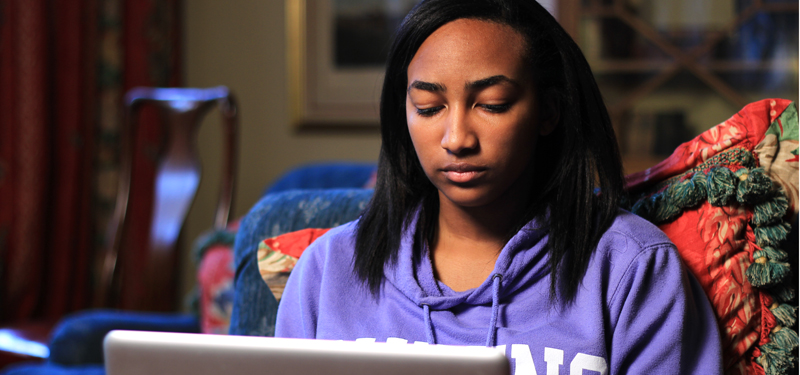A security expert who devotes his professional career to investigating online crime says families often complicate the process of staying safe on the Internet. If you wouldn’t talk about something with your neighbor, why would you post it online?
“Digital life is very much like real life. They’re intertwined now and hard to separate,” says Alan Flora, a special agent with the Computer Crimes Unit of the North Carolina State Bureau of Investigation.
“When I speak to children’s groups, I often give the example of the bulletin board by the cafeteria. I tell kids, ‘If you wouldn’t put this on the bulletin board where everyone can see it, then you shouldn’t put it online.’”
Alan Flora wraps the most important parts of online safety into three simple steps. They include recognizing threats, keeping watch over your information (and who has access to it), and ensuring website security.
Recognizing Danger
The vastness of the Internet leaves space for danger. The Internet is “very much like a car,” Flora says. It can take you to fascinating places of learning and adventure but it can also be dangerous. Staying safe means not being afraid of the Internet, but understanding where the threats are. Some the key dangers, Flora says, include maintaining the privacy of your information, verifying the identity of the people you’re dealing with, and following basic security steps. For learning more about fundamental online family security, Flora recommends www.netsmartz.org, a site maintained by the National Center for Missing & Exploited Children.
Monitoring Interactions
Interactions on social media have the potential for danger because creating fake online identities is easier than ever. This should make Internet users more cautious of what they share and who they share it with. Flora says social media users should draw a line around what information is available to strangers or “friends of friends.” He strongly recommends monitoring and regularly updating the security settings on social networking sites. Digital literacy requires distinguishing between private and public information. Tutorials on making these distinctions, and on Internet security in general, are available in the Digital Safety section of Digital Charlotte.
Identifying Secure Websites
One of the first steps toward determining whether a website is secure, Flora says, is looking at the address box. The ‘s’ in ‘https’, standing for “secure,” is one good signal. A small lock icon preceding ‘https’ is a link to security information about the site, providing users with more confidence that the site is legitimate. Staying skeptical about new or unknown sites is useful. Visitors — especially young people — should doublecheck what organization or people are responsible for the site.
Whether people play actively on the field of on social networks or watch from the sidelines, they should always be equipped with basic online security knowledge. “I don’t think people should be afraid of being on the Internet,” says Flora. “It’s here to stay. But you have to constantly be aware of what threats are there, so that you can avoid them.”
